Microsoft Excel is a powerful software. We use Excel functions and Excel Charts for our educational, business, and other daily purposes. We create circles in Excel charts for any project that makes observable progress over time. With this in mind, we will show you 4 simple methods to draw circle in Excel.
Download Practice Workbook
Download this practice workbook to exercise while you are reading this article. It contains all the datasets in different spreadsheets for a clear understanding. Try it yourself while you go through the whole process.
4 Simple Methods to Draw a Circle in Excel
Pointing out a singular cell or multiple cells on the dataset can be really cumbersome if you have a large dataset. However, you can circle around and highlight the cells to solve the problem. Moreover, we plot circles in our graphs for our mathematical problems. To do so, we will use some mathematical equations. To demonstrate, we take a dataset that represents circular components and values. Let’s use these number values to draw a circle in Excel.
1. Enter Mathematical Equation to Plot a Circle in Excel
This method will thoroughly show you how to create a circle using mathematical equations. Here, we will use the SQRT function. Let’s go through some properties of a circle. If we draw a circle and the center of the circle coincides with the origin of the (x,y) plane, so the center is (0,0). Here, at any point on the circle, if the coordinates are (x,y), then the relationship between x & y and the radius r is,
- Which is our Pythagoras theorem.
Now, we can also write,
Now, let’s use this formula to draw a circle. Follow the steps carefully.
Steps:
- First, let’s take -5 and 5 as the values of x and Radius Also, type the formula for the y-value in cell C5,
=SQRT(E5^2-B5^2)- Afterward, hit Enter or Tab button.
- After we get the y value, we will find the negative values of y The y values will only return a semi-circle. To draw a full circle, we need -y values also.
- Therefore, to calculate -y values, in cell D5, type:
=C5*-1- As a result, we get our -y values in column D.
- Next, drag the formula cells down to row 105 to AutoFill the cells.
- Eventually, the first values and the last values will coincide.
- See the below picture to understand better.
- Next, go to Insert and navigate to the Charts group.
- Tap Insert Scatter (X, Y) or Bubble Chart option in the ribbon.
- Eventually, a dropdown box will appear.
- There, click the Scatter with Smooth Line option.
- Thus, we obtain our circle.
2. Use SIN & COS Functions to Create a Circle in Excel
In this method, we will insert Excel SIN and COS functions to plot a circle. The SIN function takes in the angles in the corresponding radians and returns the sine angles. On the other hand, the COS function determines the cosine value of an angle after evaluating the angles to radians. Let’s use these functions to create a circle in our dataset.
Steps:
- Let’s set the radius as 10 in column E. Also, input the angle values in column B.
- As we will take the angles after every 30 consecutive numbers, type the following formula,
=30+B6- Later, AutoFill by dragging the cell down up to 360 value.
- Now, let’s determine the x-value by using the COS In cell C5, type:
=E5*COS(RADIANS(B5))- Press Enter to get the value.
- Similarly, determine the value of y using the SIN function and the formula is,
=E5*SIN(RADIANS(B5))- Finally, tap Enter or Tab to obtain the y values.
- Further, AutoFill the columns.
- Afterward, select the range B5:D17 to insert the values in a chart.
- Go to the Insert tab and click the Insert Scatter (X,Y) or Bubble Chart option in the Charts group.
- Consequently, the Scatter dropdown box pops up.
- Next, click Scatter with Smooth Lines option.
- Lastly, we get the desired circle in a chart.
- To avoid the little perturbation on the right side of the graphed circle, either skip zero or 360 degrees.
Read More: How to Draw a Mohr Circle in Excel
3. Draw a Circle Using Excel Shape Tool
Let’s say, we have a large dataset and we have to highlight specific cells. To illustrate, we can insert a circle around the cell to point out the cell. Excel provides various tools to draw a circle in a range. In this method, we will use the Shape tool to create a circle. Follow these steps:
Steps:
- Firstly, go to Insert > Illustrations > Shapes tab.
- Subsequently, the shape options box will appear.
- After that, go to Basic Shape and select the Oval option.
- Thus, the circle pops up in the dataset.
- You can drag the circle to highlight any cells as well.
Read More: How to Put a Circle Around a Number in Excel
4. Make a Circle Using Excel VBA
In the last method, we will make a circle using Excel VBA. This process can get you as many circles you wish in your dataset. Moreover, we can set the circle perimeter and customize the cell as well. We can select multiple adjacent cells or single adjacent cells individually. Furthermore, we can move the circle around in the dataset to locate any specific arrays. Let’s follow these easy steps to do so:
Steps:
- To begin with, select the range C8:D9 to circle around multiple cells to group them together.
- Next, go to the Developer tab, and click Visual Basic.
- Afterward, the Visual Basic window will pop up.
- Here, tap Insert and then Module to create a module.
- Consequently, a module box will appear.
- There, type the following VBA code:
Sub Draw_Circle_in_Excel()
Dim Range1 As Range
Dim Range2 As Range
Set Range2 = Application.Selection
For Each Range1 In Range2.Areas
With Range1
x1 = Range1.Height * 1.1
y1 = Range1.Width * 1.1
Application.ActiveSheet.Ovals.Add Top:=.Top - x1, Left:=.Left - y1, _
Height:=.Height + 1.1 * x1, Width:=.Width + 1.1 * y1
With Application.ActiveSheet.Ovals(ActiveSheet.Ovals.Count)
.Interior.ColorIndex = xlNone
.ShapeRange.Line.Weight = 1.3
End With
End With
Next
Range2.Select
End Sub
- Finally, press the green Run button to execute the code.
- Hence, the desired circles appear in the dataset.
- As we can see, we have the circle on the selected cells. However, we can circle around a single cell.
- Further, drag the circle to select any specific cells you wish.
Read More: How to Circle Something in Excel
Conclusion
In conclusion, we have discussed some easy steps to draw circles in Excel. Not to mention, our ExcelDemy website shows various simple problem-solving methods like this. Please, leave any further queries or recommendations in the comment box below.
Draw Circle in Excel: Knowledge Hub
- How to Circle Text in Excel
- How to Create Concentric Circle Chart in Excel
- How to Draw a Circle in Excel with Specific Radius
<< Go Back to Learn Excel
Get FREE Advanced Excel Exercises with Solutions!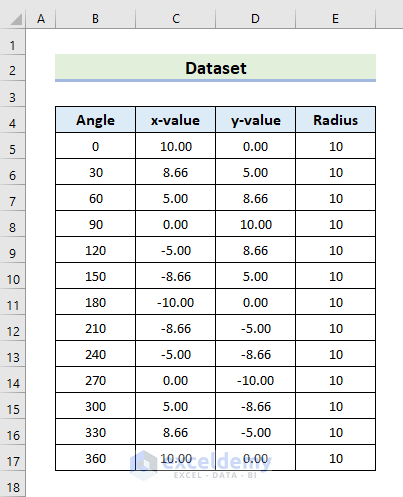
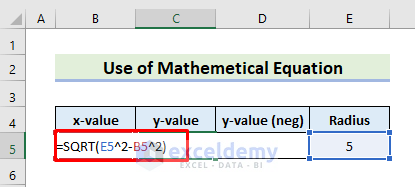
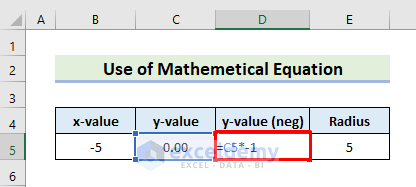
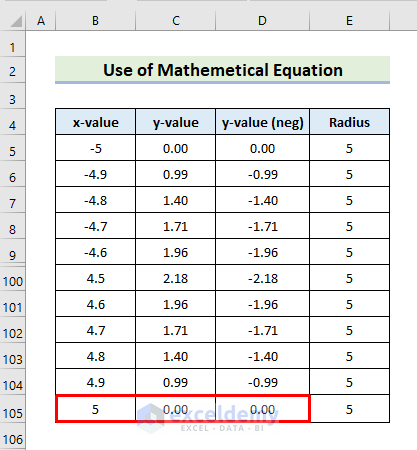

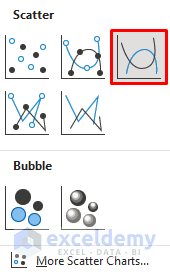
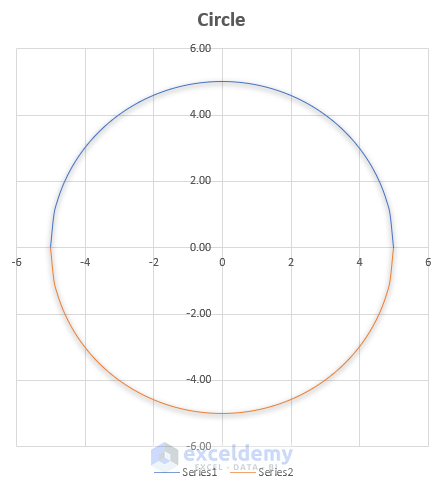
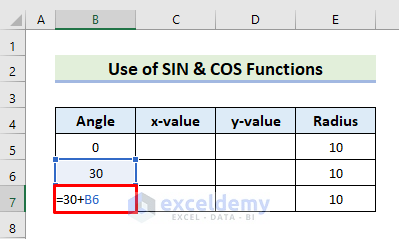
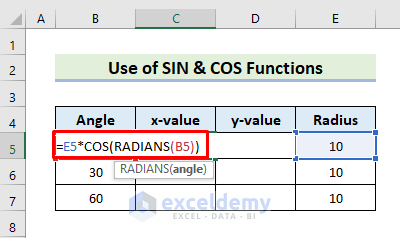
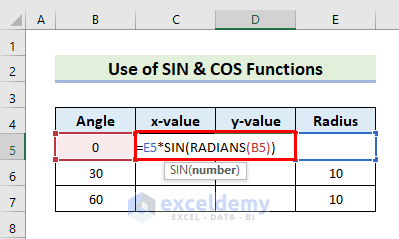
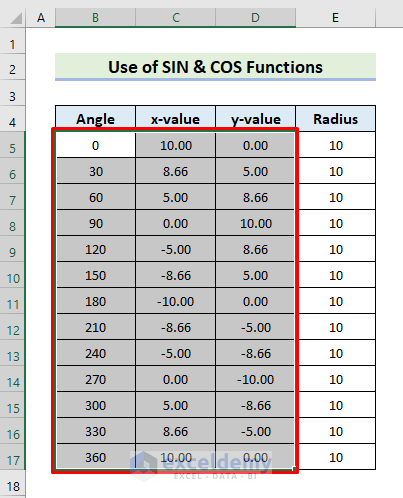
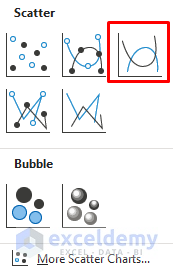
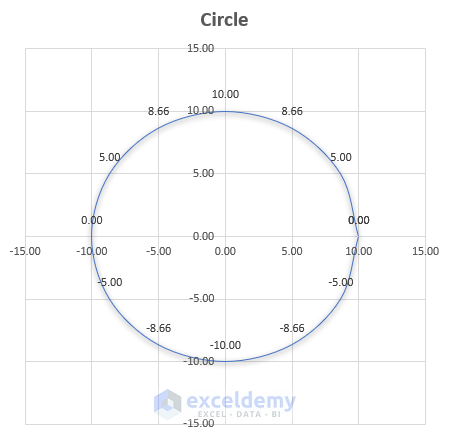
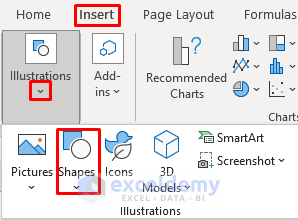
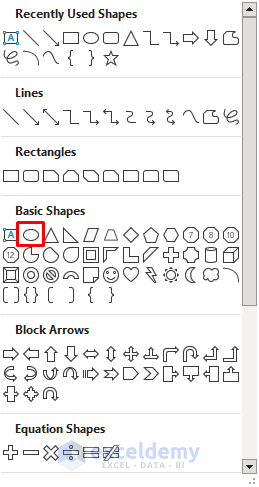
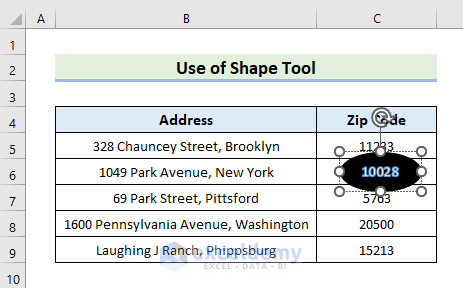
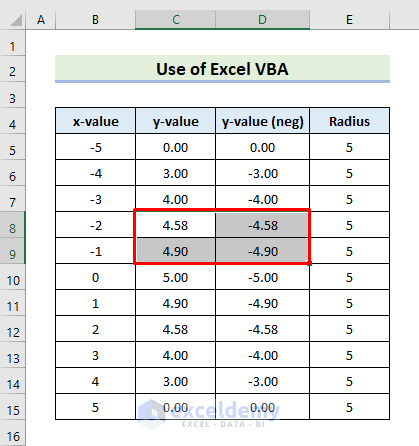


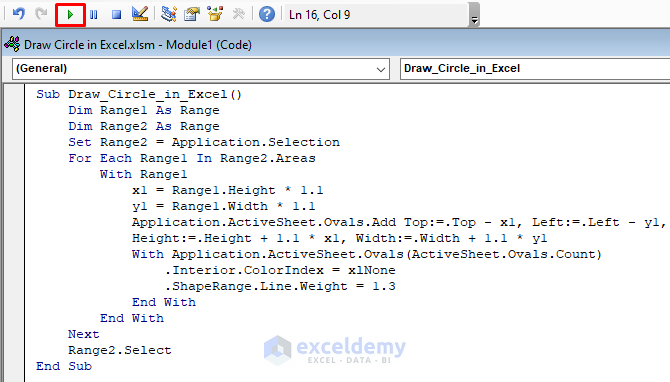
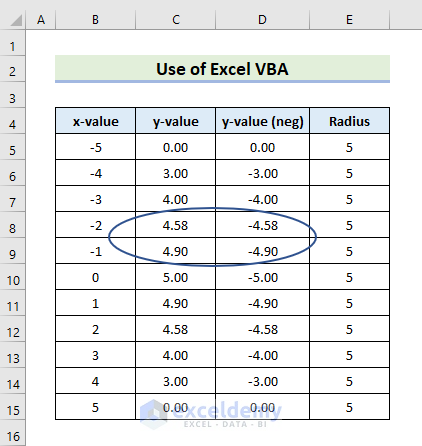



Having both your zero point and 360 creates the little perturbation on the right hand side of your graphed circle, either skip zero or skip 360 (they’re the same thing)
Dear COLM,
Thank you for your very useful suggestion. I am including the note in the article with much appreciation.
Regards,
Yousuf Khan.